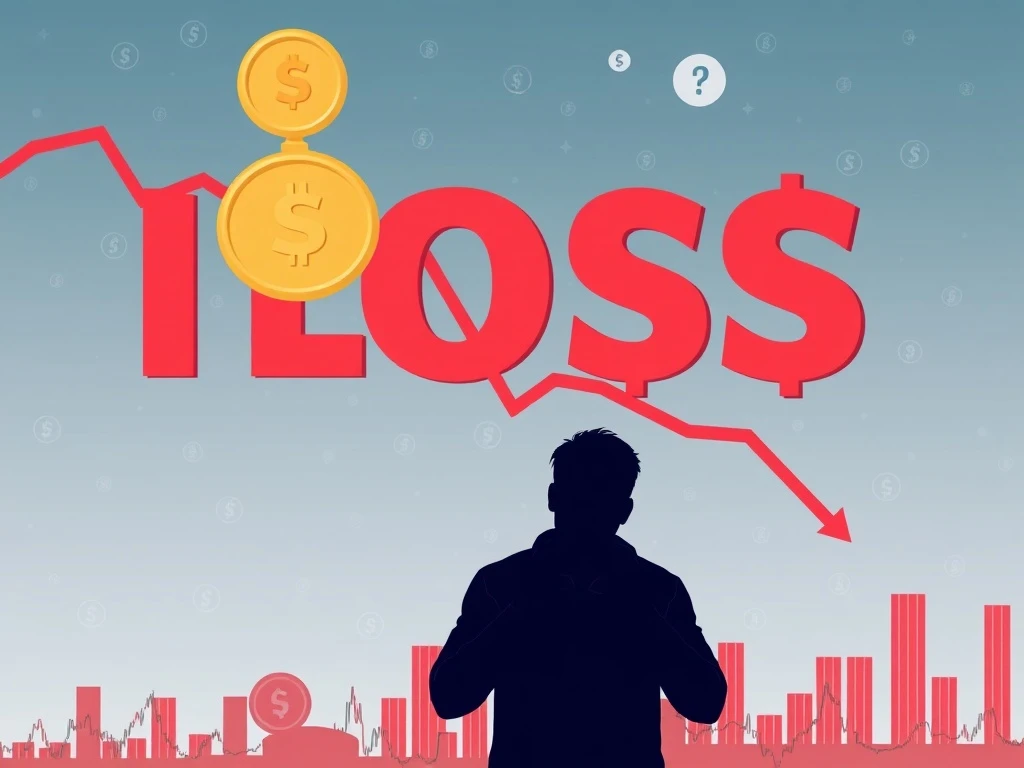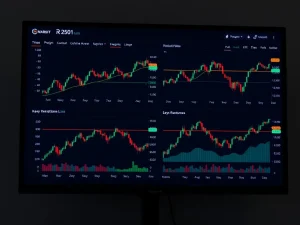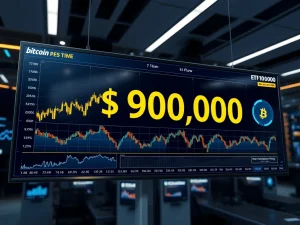Shocking PUMP Investor Loss: $5.8M Leverage Trade Unravels Amid Crypto Downturn

The cryptocurrency market, known for its exhilarating highs and devastating lows, has once again delivered a stark reminder of its inherent volatility. At the center of the latest drama is a prominent figure, “Big Brother Pump,” also known as Huang Licheng, whose audacious PUMP crypto loss has sent ripples through the digital asset community. His significant 5x leveraged crypto trade in the PUMP token has spiraled into an unrealized loss exceeding a staggering $5.8 million, highlighting the precarious nature of high-stakes speculation in the crypto sphere.
The Anatomy of a High-Stakes Leveraged Crypto Trade
Huang Licheng’s position, valued at an initial $12.12 million, was executed with 5x leverage, a strategy that amplifies both potential gains and, as evidenced here, catastrophic losses. Leverage allows traders to control a larger position with a smaller amount of capital, essentially borrowing funds to increase exposure. While this can lead to exponential profits during favorable market movements, it equally magnifies losses when the market turns against the position. In Huang’s case, a relatively small percentage drop in PUMP’s price translates into a massive dollar loss due to this amplified exposure.
The decision to maintain such a substantial leveraged crypto trade amidst a sustained decline in PUMP’s value has become a focal point of discussion among analysts and traders. This isn’t just about a single investor’s misfortune; it’s a potent illustration of the extreme risks associated with highly speculative assets, particularly those categorized as memecoins. The ongoing debate within crypto circles questions the rationale behind holding such a vulnerable position, especially when facing a prolonged bearish trend.
Understanding Memecoin Risks and Volatility
The PUMP token, central to Huang Licheng’s predicament, exemplifies the volatile nature of memecoin risks. Unlike established cryptocurrencies with defined use cases or robust technological frameworks, memecoins often derive their value from social media hype, community narratives, and speculative momentum rather than intrinsic utility. This makes them exceptionally susceptible to rapid price swings, often driven by sentiment rather than fundamental analysis.
For investors like Huang, navigating the waters of memecoins presents a unique challenge. Their price trajectories are heavily influenced by ephemeral trends and the whims of online communities. The lack of institutional credibility or tangible applications means that PUMP, and tokens like it, can experience sudden and severe collapses. This inherent instability amplifies the danger when combined with high leverage, turning what might be a modest downturn into a monumental financial setback. The ongoing PUMP crypto loss serves as a stark warning about the unpredictable nature of these assets.
A Crypto Investment Cautionary Tale for Retail Traders
Huang Licheng’s situation offers a compelling crypto investment cautionary tale, particularly for retail investors venturing into decentralized finance (DeFi). While the allure of quick riches can be strong in the crypto space, this incident underscores the perils of overleveraging and concentrating large positions in low-liquidity, high-risk assets. The magnitude of Huang’s unrealized loss, representing nearly half the total value of his trade, is a sobering reminder of what can go wrong.
Critics argue that such large, concentrated positions can have destabilizing effects on the broader market. A forced liquidation or panic selling by a major holder can trigger cascading effects, leading to further price drops and market instability. However, proponents of speculative trading often counter that high-risk strategies are an integral feature of the crypto ecosystem, where rapid price swings can indeed yield outsized gains. Yet, the question remains: at what cost?
Navigating High-Risk Crypto Assets: Due Diligence is Key
The case of the substantial PUMP crypto loss underscores the critical importance of rigorous due diligence, especially when dealing with high-risk crypto assets. Before committing significant capital, particularly with leverage, investors must thoroughly assess several factors:
- Asset Utility and Fundamentals: Does the token have a clear use case, a strong development team, or a robust technological foundation? Memecoins often lack these, relying solely on hype.
- Liquidity: Is there sufficient trading volume to enter and exit positions without significant price impact? Low-liquidity assets can be difficult to sell quickly without incurring further losses.
- Market Sentiment and Trends: While difficult to predict, understanding broader market sentiment and the specific asset’s community dynamics can provide crucial insights.
- Risk Management: This includes setting stop-loss orders, diversifying portfolios, and never investing more than one can afford to lose. Leverage should be used with extreme caution and only by experienced traders.
For investors like Huang, the challenge lies in balancing short-term volatility with long-term conviction, a task made exponentially more complex by the speculative nature of assets like PUMP. The unrealized loss, while not yet crystallized through a sale, serves as a powerful testament to the potential consequences of overexposure to high-beta assets and the need for a disciplined approach to risk.
The Unfolding Saga: What’s Next for Big Brother Pump?
As the crypto market continues its unpredictable evolution, Huang Licheng’s open position on PUMP remains a subject of intense scrutiny. The outcome of this trade—whether it ultimately results in further losses, a partial recovery, or even a miraculous turnaround—remains uncertain. However, regardless of the final outcome, this incident has cemented its place as a significant cautionary tale for anyone navigating the treacherous yet alluring landscape of cryptocurrency trading.
The $5.8 million unrealized loss stands as a stark reminder of the unpredictable nature of the crypto market and the bold, often perilous, strategies employed by those who operate within it. It highlights that even prominent investors can fall prey to the amplified risks of leverage and the inherent volatility of speculative tokens. For every story of immense profit in crypto, there are equally compelling narratives of significant loss, reinforcing the need for prudence, education, and a robust risk management framework.
Frequently Asked Questions (FAQs)
Q1: Who is “Big Brother Pump” Huang Licheng?
A1: Huang Licheng, known as “Big Brother Pump,” is a prominent investor in the cryptocurrency space who has gained attention for his high-stakes trading activities, including his recent substantial leveraged position in the PUMP token.
Q2: What is a leveraged crypto trade?
A2: A leveraged crypto trade involves borrowing funds to increase the size of a trading position beyond what one’s own capital would allow. While it can amplify profits, it also significantly magnifies potential losses, as seen in Huang Licheng’s case.
Q3: Why are memecoins considered high-risk crypto assets?
A3: Memecoins are considered high-risk because their value is primarily driven by social media hype and community sentiment rather than intrinsic utility, technology, or fundamental analysis. This makes them highly volatile and susceptible to sudden price collapses, increasing memecoin risks for investors.
Q4: What are the key takeaways from Huang Licheng’s PUMP crypto loss?
A4: The key takeaways include the extreme dangers of using high leverage, the inherent volatility and speculative nature of memecoins, the importance of rigorous due diligence, and the critical need for robust risk management strategies when investing in high-risk crypto assets.
Q5: How can investors mitigate risks when trading speculative cryptocurrencies?
A5: Investors can mitigate risks by avoiding excessive leverage, diversifying their portfolios, setting stop-loss orders, only investing capital they can afford to lose, and conducting thorough research into an asset’s fundamentals and liquidity before committing funds. Understanding the crypto investment cautionary tale from others’ experiences is also vital.









